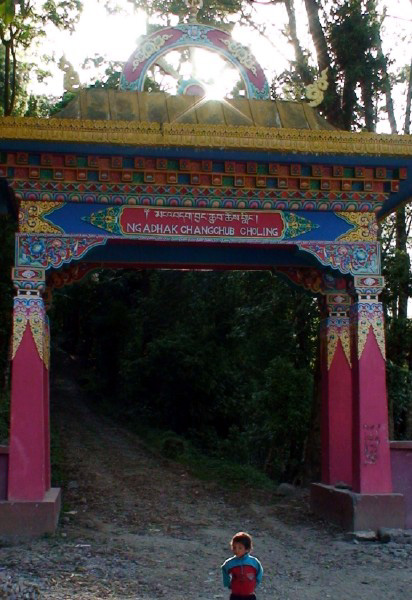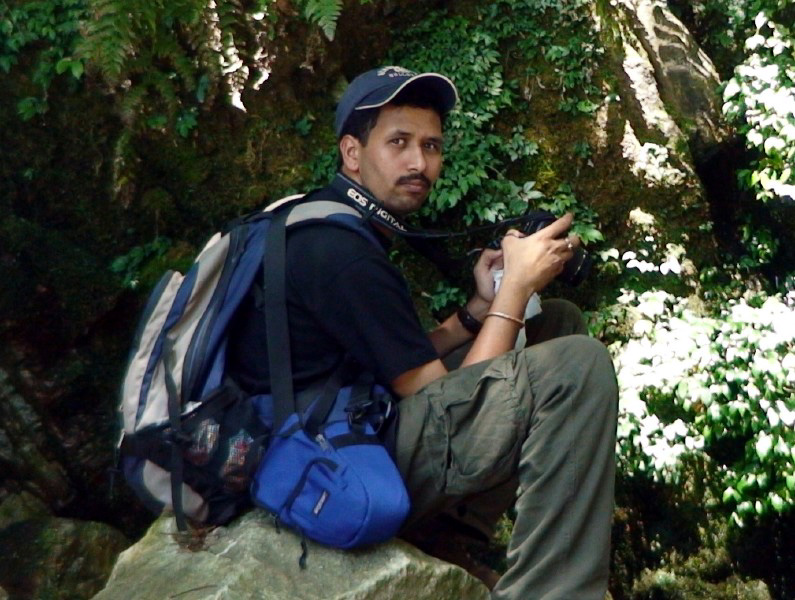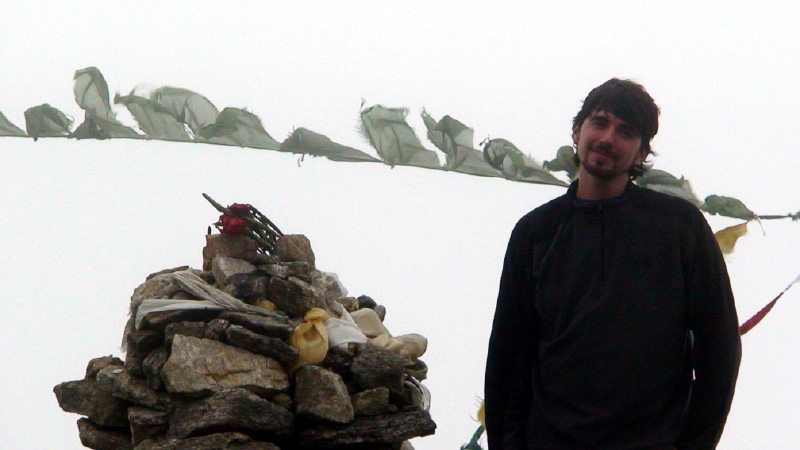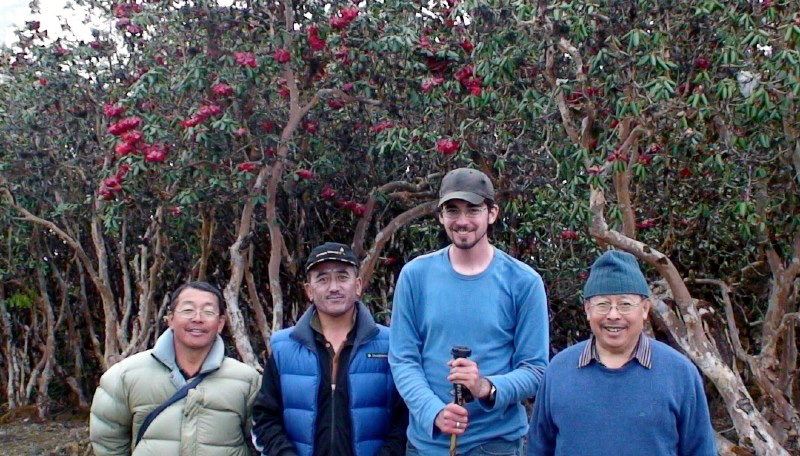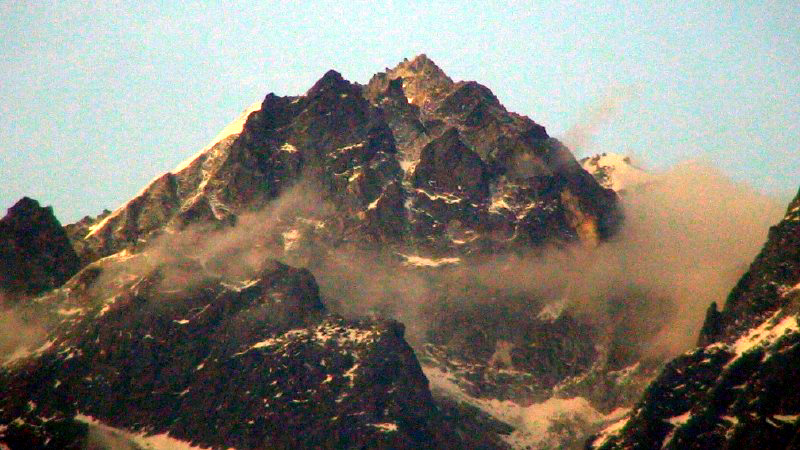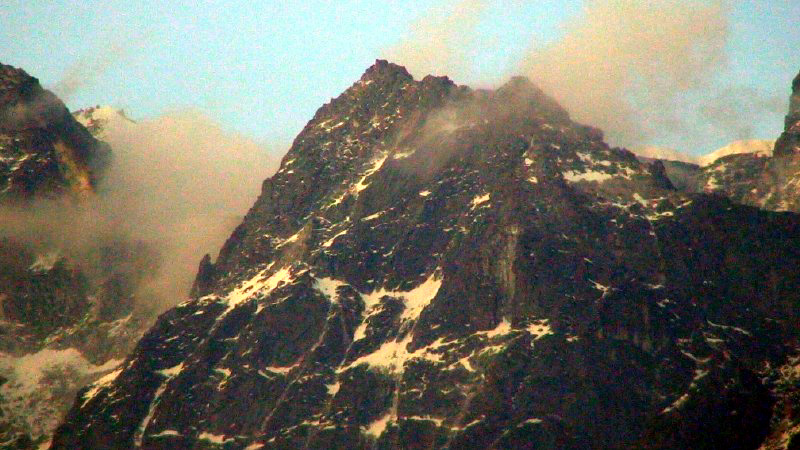In this post I will explain how to do the Sikkim Guichala Pass Trek in NE India. I provide details that include maps, costs, logistical requirements and facts as well as links to additional details, photos and videos. This is a guided adventure on a shoestring. Follow the links to dig deeper into the adventure. A day by narrative is available here.
Sikkim Guichala Pass Trek Backstory
This trek came together after a fair amount of confusion so I will start from the very beginning. In late April, Seth and I were steaming in Varanasi, India and in dire need of cooler locals.  We talked about our options and decided that a trek into the Indian Himalayas would be the ideal distraction. We asked fellow travelers for advice and feedback before starting out for the province of Sikkim, in northwest India. After a number of failed attempts we managed to acquire tickets on a night train that would take us directly from Mugals (a 200 rs Tuk-Tuk ride to the station in the town on the other side of the Ganges River and to the east of Varanasi). Our destination was the northern town of New Jalpaiguri (NJP) early the following morning.
We talked about our options and decided that a trek into the Indian Himalayas would be the ideal distraction. We asked fellow travelers for advice and feedback before starting out for the province of Sikkim, in northwest India. After a number of failed attempts we managed to acquire tickets on a night train that would take us directly from Mugals (a 200 rs Tuk-Tuk ride to the station in the town on the other side of the Ganges River and to the east of Varanasi). Our destination was the northern town of New Jalpaiguri (NJP) early the following morning.
It was a challenge finding the actual train because the station had no working notice boards, but we eventually managed to locate the train. We then managed to find our births after many questions and much misinformation. The night trip was uneventful and we reached our destination only two hours late the next morning. From NJP we could take the daily toy-train for a 6-hour slow winding ride to Darjeeling or take a shared jeep (100 rs each) for a faster (and scarier) ride in and out of zero visibility fog. We opted for the jeep ride and reached Darjeeling by mid-day.
Darjeeling is a small village (on the boarder of Sikkim) built on various levels of a mountain’s prominent ridge line. Its high elevation ensures that it is immersed in damp clouds for much of the year (so we saw very little). It is also a prime destination for wealthy Bengal residents (not a skinny Indian to be seen) and cheap alcohol.
![]()
Total Cost Range of this Activity is: $$
Cost Details:
| 2 Nights in Gangtok (before & after trek) Trek 9 day package (includes transport, lodging, meals) Misc junk food, drinks |
$12 $225 $40 |
| Total | $277 |
2008 prices
Seth and I reached Darjeeling in damp, but good spirits. Naturally the most popular guesthouses were full (those listed in the Book of Lies – Lonely Planet) so we had to do some exploring and steep footwork before we found on a reasonably comfortable vacant room. We settled into the town for a few days of cool reconnaissance and acclimatization. We soon discovered that different people had different versions of what the Sikkim entrance requirements were. The prominent version was that you must visit a police station at the foot of the town to show your passport and obtain a form.
You fill out the form and then take it to the Immigration office (at the top of the town) with your passport and a photo for a stamp. Then you go back to the police station at the bottom of town with the stamped form and your passport for another stamp. At that point you have an authorized 15-day permit. An alternative version was that you could get the permit at the Rangpo boarder crossing. We opted for the Rangpo approach.
Click to watch Part 1 Video
The following day we walked to the bus/taxi/jeep stand at the foot of the town. We paid the standard 120 rs fare per seat in a shared jeep to Gangtok (via Rangpo). The ride was typically scary (winding hairpin turns, blaring horns, steep climbs, bumps, potholes, and rest stops at tottering shacks). Upon reaching Rangpo we had to get out and show our permit. Not having one, we were sent up the road to another office. We were then informed that we needed to provide photocopies of our passports and Indian visa’s. We then went in search of a photocopy machine (at the proverbial lunch hour). With the help of the jeep driver we found a lunching proprietor who agreed to return to his shop and make the copies (4 rs). We returned to the second office to fill in the forms and turn in our copies. He stamped the form and then sent us back to the first office were we patiently sat until our form was stamped a second time. We then returned to the waiting jeep to continue the kidney jarring 7-hour ride.
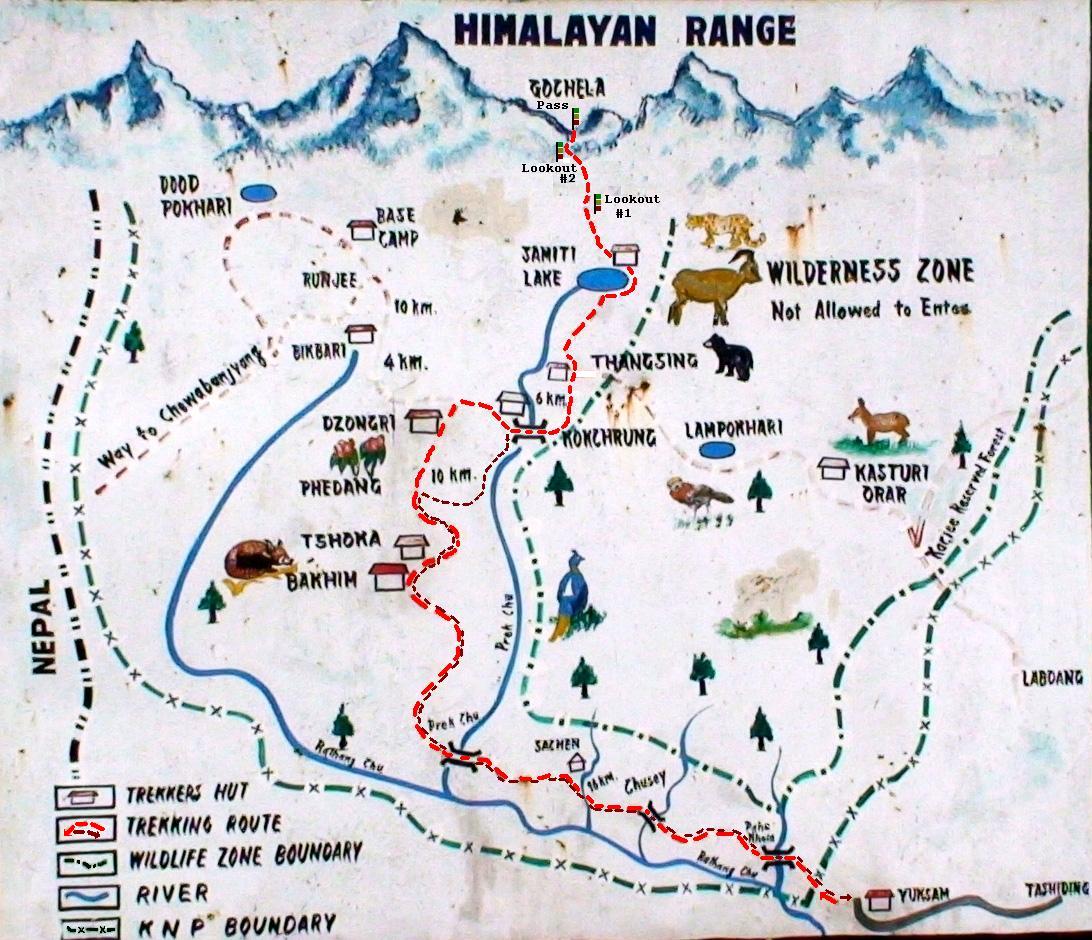
Guichala Pass Trek Map
We reached Gangtok (1600m) bus-park amidst the usual mayhem, grabbed our gear and exited the mob of taxi drivers to the main street. Gangtok, like Darjeeling, is located at the crest of a ridge. We headed up hill and easily found the main shopping road and the few hotels and guesthouses clustered in that area. We spent some time asking around, but found all cheap accommodation full so we settled for an expensive 300 rs room for the night. We had been informed that we needed a trekking permit to enter the remote regions and that these permits were only available from registered tourist offices (AKA package tour), so we agreed to spend a few days in Gangtok stocking up on supplies and searching for a suitable trekking package.
People Photos
The next morning I visited the government tourist office and confirmed that only group tours were possible and that independent trekking was not permitted. The helpful gentleman then gave us various informative pamphlets before handing us off to a local tour operator that was conveniently available to take us to his office next door. We listened to his pitch and then exited to the street where various touts, also selling packages, accosted us. We spent the rest of that day shopping around for a package that fit our budget and would get us to our trekking objective in Sikkim, Guicha-la pass and views of Kangchenjunga (the third highest mountain in the world). We also shopped around for cheaper and friendlier accommodation.
Tsokha Mountain Photos
By the next morning we had settled on a price of $225 per person for a nine-day trek. We had also settled on the Himalayan Adventure Tours & Trek agency (which we would regret in time). We had also met a lone American, the previous day, who had agreed to join us on the trek. We all went over the terms of the trek, paid our fees, and agreed to leave the following morning.
The next morning we discovered that an additional person would join our small group. He was a native Indian who had spent time working in Alaska. Vic turned out to be a quite and determined trekker that added a positive element to our initial party. However, we also discovered that a group of 11 additional trekkers (Indian university students) would be semi-attached to our group periodically. I was not happy with the last minute switch and correctly assumed that this last minute expansion of the group would create havoc to the dynamics and structure of the trek.
Click to watch Part 2 Video
Click the big yellow button to become a patron!
Link to Trek day-by-day Narrative




